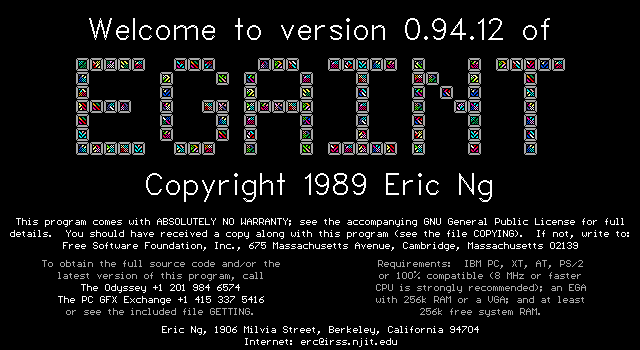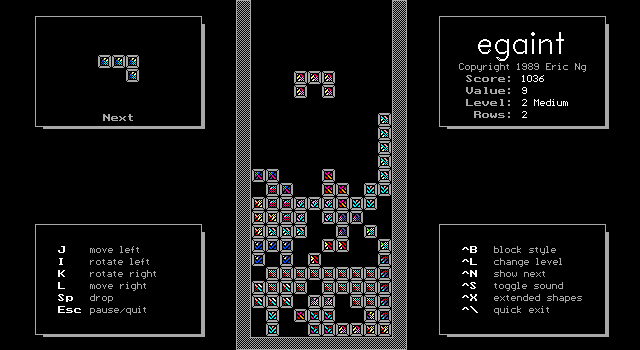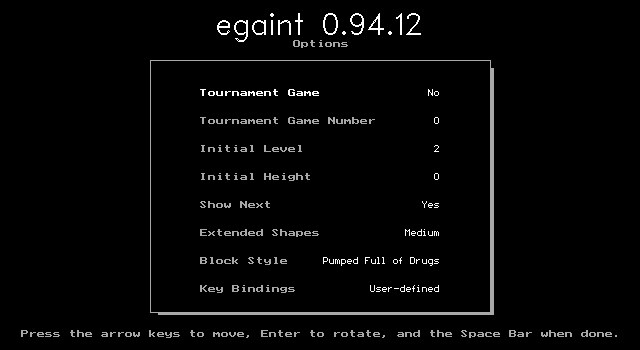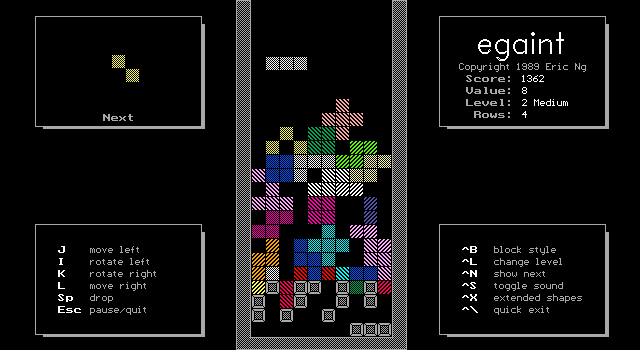Retro Replay Review
Gameplay
Egaint’s core gameplay will feel immediately familiar to anyone who has dabbled in Tetris or its many clones, yet it carves out its own niche through clever twists on the classic formula. Blocks descend at a steady pace, and players clear lines by lining up pieces in the familiar ten-column grid. However, the game’s exotic piece designs—ranging from elongated wedges to unconventional polygons—keep the experience fresh and challenge players to rethink their stacking strategies.
One of Egaint’s standout features is its custom game settings menu, which allows you to tweak the fall speed, gravity levels, and even the piece set itself. You can opt for classic block types or experiment with rare shapes that demand spatial reasoning beyond the standard I-, L-, and T-blocks. This level of customization feels particularly impressive given the game’s diminutive footprint, making it a delight for players who crave variety and control over their play sessions.
For those seeking a structured challenge, the tournament mode offers a fixed sequence of pieces that every player faces in the same order. This eliminates the unpredictability of random drops and encourages mastery through memorization and pattern recognition. Though Egaint lacks online multiplayer, it more than compensates by letting you pit your best runs against personal high scores or friendly rivals via local hotseat turn-taking.
Graphics
Despite a file size under 100KB, Egaint delivers surprisingly crisp visuals on early IBM PC hardware. The high-resolution block sprites are sharp and distinct, making it easy to identify even the most unusual shapes at a glance. The minimalist approach—eschewing colored backgrounds in favor of a clean playfield—keeps your focus squarely on the falling pieces.
The palette of block styles adds a layer of visual flair, with several exotically-named skins that transform the game’s look. Whether you choose the classic monochrome bricks or venture into more adventurous themes, each skin retains excellent readability. The result is a game that feels polished and purposeful, proving that technical constraints need not stifle aesthetic ambition.
Included alongside the graphical version is AINT, a text-mode counterpart that runs flawlessly in DOS environments. While it lacks the visual punch of its high-resolution sibling, AINT shines in low-resource or remote-access scenarios—think 2400 baud modem sessions—demonstrating Egaint’s versatile design ethos and commitment to broad accessibility.
Story
Egaint emerged in the late 1980s, riding the wave of Tetris-inspired freeware that democratized puzzle gaming on personal computers. It was crafted with both efficiency and ingenuity, fitting within the era’s stringent download limitations. At a time when 100KB could take precious minutes to transfer over dial-up, Egaint’s small size and fast load times made it a favorite among bulletin board system (BBS) enthusiasts.
The game’s development story highlights the creativity spurred by technical limitations. Without the luxury of expansive storage, the authors focused on tight code and clever sprite work, squeezing out functionality that rivaled much larger commercial titles. This ethos of “doing more with less” is woven into every aspect of Egaint, from its compact executable to its robust customization options.
Though Egaint never achieved the mainstream household name of its Soviet-origin counterpart, it occupies an important chapter in PC gaming history. It represents a period when hobbyist developers pushed hardware boundaries, and freeware titles provided a playground for experimentation. For retro-gaming aficionados, Egaint’s backstory is as compelling as its gameplay, offering a window into the ingenuity of early PC communities.
Overall Experience
Playing Egaint today feels like uncovering a time capsule of early PC gaming. The game’s responsiveness and intuitive controls hold up well, and the absence of modern frills only underscores its solid mechanical foundation. Whether you’re a puzzle veteran or a newcomer to line-clear challenges, Egaint delivers an experience that’s both approachable and endlessly replayable.
Egaint’s greatest appeal lies in its balance of simplicity and depth. The straightforward interface invites casual sessions, yet the exotic block sets and tournament mode beckon you back for repeated attempts at perfection. Its tidy size and minimal system demands make it ideal for quick gaming breaks on legacy machines or emulators.
Ultimately, Egaint stands as a testament to the golden age of freeware—when passion projects and community sharing fueled innovation. If you’re looking to explore a piece of PC gaming heritage, or simply want a tight, customizable Tetris variant, Egaint remains a delightful and accessible choice even decades after its release.
 Retro Replay Retro Replay gaming reviews, news, emulation, geek stuff and more!
Retro Replay Retro Replay gaming reviews, news, emulation, geek stuff and more!







Reviews
There are no reviews yet.